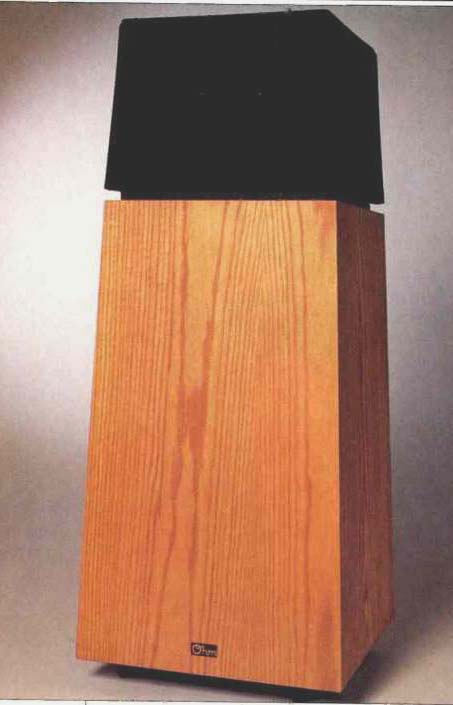
Manufacturer's Specifications:
System Type: Two way, vented with Walsh woofer/midrange and .dome tweeter.
Drivers: 12-in. (30.5-cm) woofer and 1-in. (2.54-cm) dome tweeter.
Crossover Frequency: 8 kHz.
Nominal Impedance: 4 ohms.
Frequency Response: 25 Hz to 25 kHz, ±4 dB.
Power Recommendations: 50 watts minimum, 500 watts maximum, 1 kilowatt maximum on peaks.
Dimensions: 17 1/2 x 17 1/2 in. at bottom, tapering to 15 x 15 in. at top; 43 in. H (44 x 44 cm at bottom, tapering to 38 x 38 cm at top; 109 cm H).
Weight: 95 lbs. (43 kg).
Price: $4,800 per pair.
Company Address: 241 Taaffe Place, Brooklyn, N.Y. 11205.
In the Ohm Walsh 5's name, "Walsh" refers to a unique application of a cone-type driver which allows it to repro-1 duce an extraordinarily wide frequency range. The special deep-cone driver, originated by Lincoln Walsh, is mounted face down on the top of the cabinet and is allowed to radiate in all directions from what would normally be called its back side. The result is a wide horizontal directivity pattern.
There's no crossover until 8 kHz, where a titanium dome tweeter of controlled directivity extends the frequency response to 25 kHz.
The first Ohm Walsh speaker, the Model A, was introduced in 1970. The most famous and long-lived, however, was the Model F, a 12-inch, single-driver system which was produced for 15 years. The Walsh 5 is a limited-edition, top-of-the-line model that can be considered a descendant of the Ohm F. Five other Walshes extend the line down to the Sound Cylinder, at $549 per pair, and Ohm makes three conventional systems as well.
Extreme solidity of construction is evident in the Walsh 5's 6.5-cubic foot, oak-veneer cabinet. Four hand-tightened wing nuts secure the easily removed top section (which contains the Walsh driver, tweeter, and sound absorption within a cylindrical screen) to the 'cabinet. With the top removed, cross-bracing 2 x 4s can be seen through the opening. What cannot be seen are the 17 other panel stiffeners and 13 lead damping panels. The damping panels, composed of 1/16-inch lead bonded to quarter-inch plywood, are applied in specific locations to suppress resonances. The bottom opening vent is an unusually large 4 inches in diameter to allow maximum air volume velocity without restriction or turbulence noise. The large vent diameter requires an unusual duct length to tune the cabinet to 25 Hz. When I reached in, my arm disappeared to the elbow before my hand encountered a right angle bend.
A recessed area near the bottom of the finished rear panel contains gold-plated, five-way input connectors and three switches. The switches are labeled "Perspective," "Lows," and "Highs." Each switch has three positions, an average or middle position and two which offer small amounts of boost or cut in a particular frequency range.
"Perspective," as the excellent, although non-technical, owner's manual indicates, is a broad midrange control for changing one's "seat" in the concert hall.
The assembled system is topped off with a black grille cloth stretched over a wire frame. Casters allow moving the 95-pound speaker easily to experiment with placement.
They also space the cabinet off the floor, providing an exit for the radiation from the down-firing vent.
The basic idea of the Walsh driver is to deal with the inevitable cone breakup at high frequencies, turning it into an advantage to provide cylindrical radiation. Breakup means that not all parts of the cone are moving in the same direction at the same time. A conventional speaker seeks to extend pistonic operation to as high a frequency as possible, and then it crosses over to a smaller driver whose breakup range is higher yet. The Walsh driver, however, encourages breakup in the form of controlled wave propagation downward and outward along its inverted cone. At high frequencies, the moving wave radiates the sound rather than the motion of the cone as a whole. The angle of the cone is chosen so that the outward or horizontal expansion of the supersonic mechanical cone wave matches the velocity of sound. Thus, as the wave approaches the bottom of the cone, it remains in phase with the acoustic wave radiated earlier near the top. Sound wave radiation is omnidirectional at low frequencies and approaches cylindrical at high frequencies.
In practice, science, art and black magic are required to make this happen. First, a Walsh driver must have a smooth transition from piston motion at low frequencies to wave motion at high frequencies. The transition occurs at about 1.6 kHz and is controlled by absorbing all wave motion within the cone before it reaches the outer suspension. The gradual absorption is provided by the modified polypropylene cone material and foam damping blocks affixed to its surface. If this were not done, the waves would reflect back up the cone from its edge and interfere with the new waves being sent down. This would produce the erratic response typical of conventional speakers in their breakup region.
The cylindrical radiation which comes about naturally from a Walsh driver must be restricted. The first Ohm Model F speakers were allowed to radiate into the full 360°. While it gave an airy sound, it proved to stimulate listening room acoustics too much. Experiments were carried out, over a span of years in different acoustical settings, with the Model F speakers fitted with acoustic absorption for the rear and sides. Eventually, a pattern maximizing radiation at a cross-fired 45° angle was chosen for best imaging and room compatibility. With Walsh drivers, such aiming does not necessarily compromise response flatness at other angles.
Proper placement of absorption can evenly attenuate the entire upper frequency range, and in the Walsh 5, this absorption is located between the cylindrical screen and the driver. Toward the rear, a thin layer of felt is glued to the outside of the cylinder to further attenuate sound in that direction.
Power handling capacity is another problem faced by any single driver that must cover the range from 25 Hz to 8 kHz.
The voice-coil must be long-travel for the lows while being light and of low inductance for the highs. Expensive high-temperature materials and adhesives are, of course, need ed. Ferrofluid is used in the magnetic gap of both the Walsh driver and the tweeter. This damping and heat-conducting oil has fine magnetic particles in suspension so that it does not fly from the gap: An automatically resetting circuit breaker further insures against overheated voice-coils.
Over-excursion of the Walsh driver on bass notes will produce harmonics of the fundamental, as is the case with any speaker. However, since mids and highs are also being reproduced by this driver, distortion-or modulation-of them will be produced as well. A long linear-travel voice-coil is employed to lower distortion. In addition, Ohm uses a large vented cabinet to reduce excursion requirements in the vicinity of 25 Hz. Perhaps most interesting, a patented crossover network consisting of two coupled inductors and two capacitors precedes the Walsh driver. These parts and two resistors are switchable by the "Lows" control, boosting where necessary and isolating the system from signals below its operating range.
Measurements
Input impedance, rated at 4 ohms, is shown as magnitude versus frequency in Fig. 1 and as reactance versus resistance in Fig. 2. Both the middle settings of the rear-panel switches and the settings yielding the worst-case load are shown in the magnitude plot. Impedance stays above 4 ohms and has little reactive component over most of the range, so the Walsh 5 will be a reasonable load for an amplifier rated for 4 ohms. Although it is not shown, impedance rises below 10 Hz as a result of the input filter network and is an open circuit at d.c.
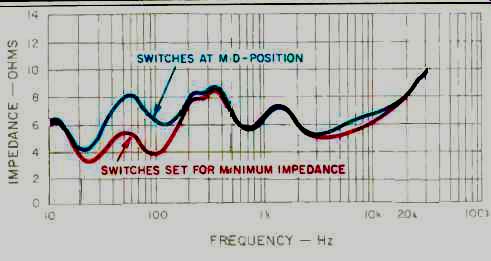
Fig. 1-Magnitude of impedance with rear-panel controls set to mid-position
and set to produce minimum impedance.
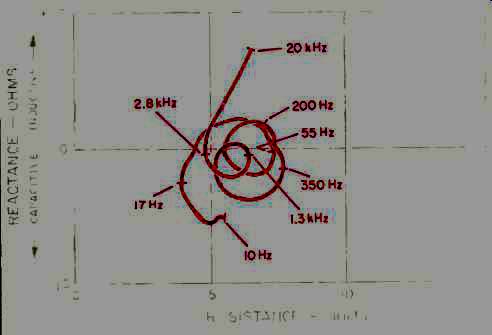
Fig. 2-Complex impedance.
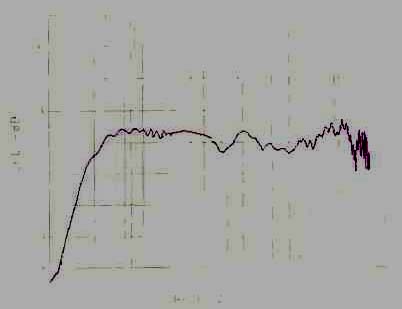
Fig. 3-One-meter on-axis anechoic frequency response, with an input of 1.0
watt into 4 ohms (2.0 V).
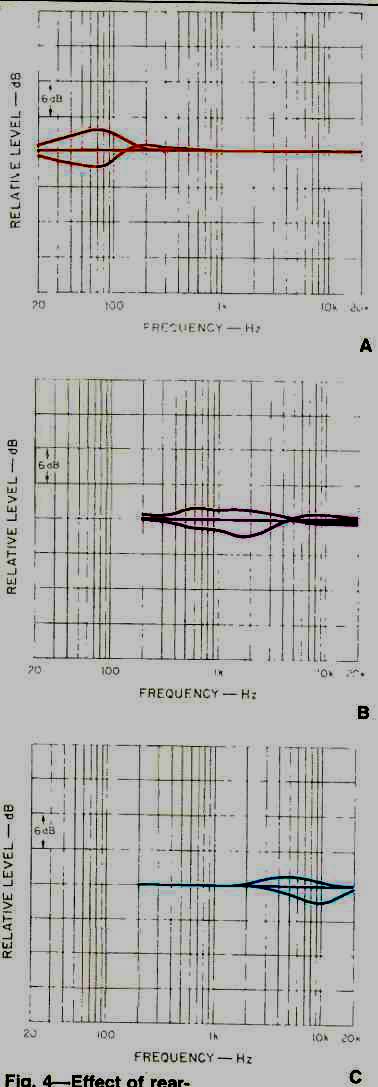
Fig. 4--Effect of rear-panel switches on frequency response, using "Lows" control
(A), "Perspective" control (B), and "Highs" control (C).
The 1-meter on-axis amplitude response is shown in Fig. 3. This is an anechoic or reflection-free plot except for the bass range, where the speaker is measured standing on a rigid surface and using the ground-plane technique (discussed in "Ground-Plane Acoustic Measurement of Loud speaker Systems" by Mark Gander, Journal of the Audio Engineering Society, Vol. 30, No. 10, October 1982). Sensitivity averages only 80 dB SPL for 1 watt input; it would be higher with all controls switched to maximum. In a listening room, a pair of Walsh 5 speakers starts to catch up with conventional speakers having higher measured anechoic sensitivity because the Walsh 5's wider directivity puts proportionately more acoustic power into the room. Much of this power reaches the listener after reflection from walls. The Walsh 5 is still somewhat power hungry, undoubtedly due to high cone mass and losses in the damping materials.
The upside of Fig. 3 is that it is one of the most uniform and extended response curves that I have measured from a loudspeaker. If using a bigger power amp is the price for this performance, I am ready to pay it. The curve is slightly depressed from 400 Hz to 6 kHz. This is well within specification limits, but it could cause some of the recessed quality I heard earlier on vocals and on midrange solo instruments placed up front on the recorded soundstage.
Figure 4 shows how the frequency response of the Walsh 5 is modified by the use of the rear-panel controls. These controls are appropriately subtle in their effect. Note that the measured midrange depression can be dealt with nicely, although I recommend setting the controls by ear, using music.
As I mentioned earlier, the axis of maximum radiation is 45° to the inside of the front direction. Anechoic response on this axis is shown in Fig. 5. It is very flat as well but is generally higher than the response in Fig. 4 in the upper midrange and above 10 kHz. When sitting well off the center line, this tends to be the response that arrives from the far speaker. This spectral tilt tends to re-center the images, which would otherwise move towards the near speaker because of the precedence effect.
Phase response is plotted in Fig. 6 for the on-axis direction. It is relatively smooth, resembling the curve of a 25 Hz to 25 kHz electrical bandpass filter. Usually phase shift found in loudspeakers is at the crossover, not because of the drivers. Since the Walsh 5's single crossover is way up at 8 kHz, the system's smooth phase response is not too surprising. Ohm's chief designer, John Strohbeen, feels that this is important to music reproduction.
The 3-meter room response test measures direct sound and reflections occurring within 10 mS from the speakers in my listening room at my listening position. Rooms differ, but not by very much during this critical, early-arrival time span.
The 3-meter measurement is plotted for the Walsh 5 in Fig. 7. The on-axis curve was measured on the forward axis of the speaker, and the 30° curve measured the sound aimed inward towards a centered listener. Both curves show mid range interference notches caused by the floor reflection.
The ceiling and the wall behind the speaker also create interference notches. We don't listen without a room, but some speakers do manage to avoid these early reflections.
"Three-dimensional" plots of directivity are shown in Fig. 8 (horizontal) and Fig. 9 (vertical). Neither lobing nor mid-band pattern narrowing is evident. Radiation is omnidirectional at low frequencies and quickly attains and holds the intended (and still very wide) directional pattern through the mid and high frequencies. Maximum radiation is to the front and inward toward the other speaker. The linear frequency display stretches out the high end and shows a regular pattern of peaks and dips above 10 kHz. From their spacing, it can be estimated that there is an interference about 6 1/2 inches from the primary source. This effect is apparently due to a reflection from the cylindrical metal grille around the drivers.
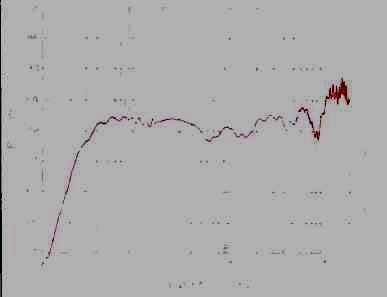
Fig. 5-One-meter anechoic frequency response measured 45 degrees off-axis
in the toe-in direction of maximum radiation.
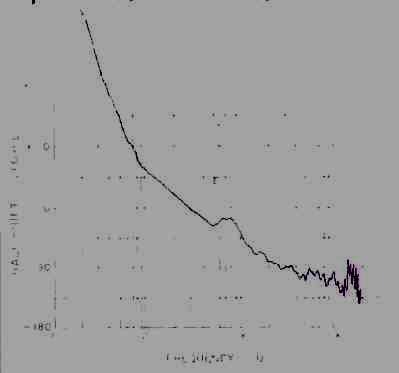
Fig. 6-One-meter on-axis phase response.
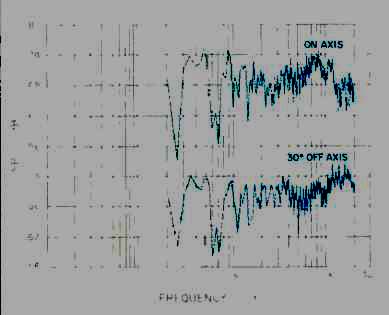
Fig. 7-Three-meter room response measured on-axis and 30° off-axis; for clarity,
off-axis curve has been lowered.
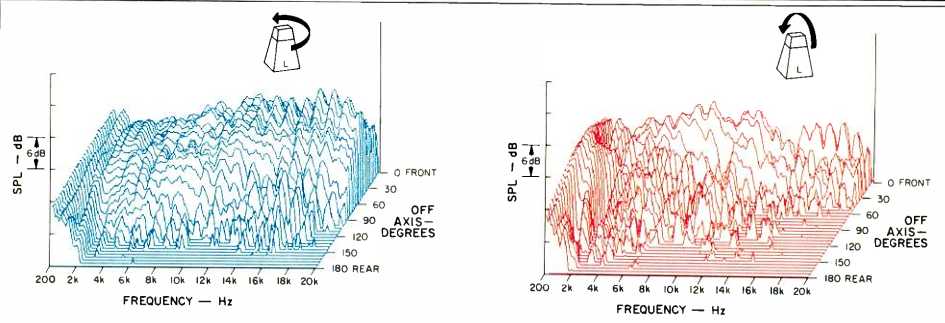
Fig. 8-Horizontal off-axis response plots taken from the front, around the
maximum radiation side, to the rear. Fig. 9--Vertical off-axis plots taken
from in front, over the top, to directly behind the system.
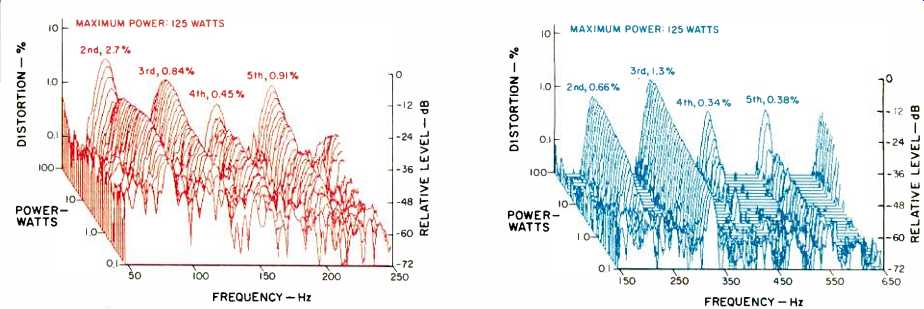
Fig. 10--Harmonic distortion products for the tone E1 (41.2 Hz). Fig. 11--Harmonic
distortion products for the tone A2 (110 Hz).
Figures 10, 11, and 12 show the harmonics of test frequencies of 41.2, 110, and 440 Hz (musical notes E1, A2, and A4) at power input levels of 0.1 to 125 watts. Bass distortion is exceptionally low, but it must be remembered that the Walsh 5 requires somewhat higher power and that distortion rises with increased power. However, even with other systems at matched sound pressure levels, the Walsh 5 is one of the cleanest speakers available. During my lab testing at lower power levels, the Walsh 5's low sensitivity resulted in a lower acoustical signal-to-noise ratio, with a measurement at the test equipment's noise limit. The random spikes are from room noise, not the speaker.
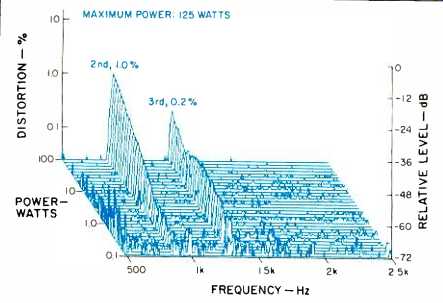
Fig. 12--Harmonic distortion products for the tone A4 (440 Hz).
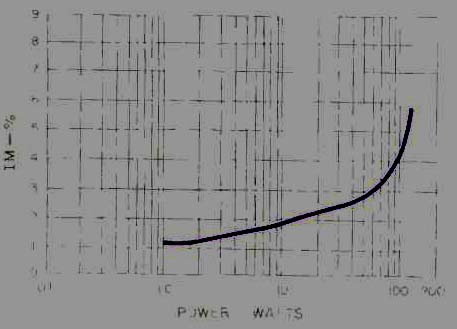
Fig. 13--IM distortion on 440 Hz (A4) produced by 41.2 Hz (E1) when mixed
in one-to-one proportion.
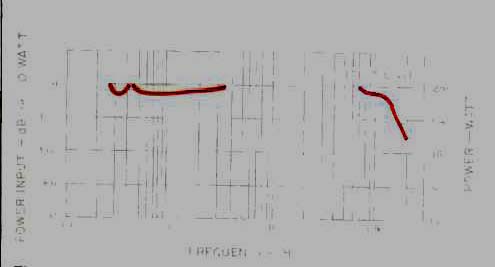
Fig. 14--Power linearity.
Nonlinearity was measured by the IM method, shown in Fig. 13. Here, a 41.2-Hz modulating signal is applied in equal level with a 440-Hz carrier frequency. Ideally, the carrier would remain unaffected by the presence of the low frequency. The Walsh 5 maintains very low modulation up to a higher than usual test level of 125 watts.
Testing power linearity is a direct method of determining how much power a speaker will handle. Frequency sweeps at progressively higher power inputs are applied. Acoustic output eventually fails to track the increase due to distortion or compression. Each frequency and power input where acoustic output fails to track within 1.0 dB generates a point on the plot of Fig. 14. The Walsh 5's results are outstanding.
Power input above 100 watts causes only slight compression between 50 and 200 Hz, which increases above 8 kHz.
The Walsh 5's ability to handle 200-watt sine waves between 20 and 40 Hz is so unusual that I reran the test several times before I was convinced there was no measurement error.
The energy-time response of the Walsh 5 is shown in Fig. 15. Energy in this test (from 20 Hz to 20 kHz) is concentrated in the upper range, so the tweeter accounts for 60% of the plot. The plot of the arrival of sound from a pulse is desirably tall and compact in time. A secondary arrival at 3.9 mS is the reflected wave or interference that causes the minor response ripples above 10 kHz.
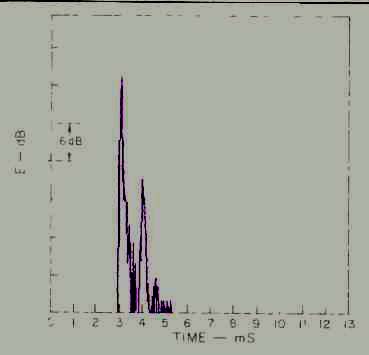
Fig. 15--Energy vs. time.
Use and Listening Tests
I'm glad that the 95-pound Walsh 5 loudspeakers come with casters, because I needed to move them around to find out the best sounding location. My listening room is rectangular, and I usually place speakers near a short wall firing into the long direction of the room. When I placed the Walsh 5 systems there, about three feet out from the wall, I heard a disappointing "disembodied" effect. Spectral balance was very good, but depth imaging seemed to be in two places at once-at the speakers and way back behind the wall. Fortunately, repositioning the speakers corrected this condition.
Moving any pair of speakers around changes several aspects of their sound at once. Positioning speakers near walls increases the bass output of most models, but it is easy to end up with too much bass at certain room mode frequencies. Proximity to walls also encourages coloration from speakers with overly wide directivity because of interference from the reflected sound. Placing speakers away from walls, either behind them or to their sides, increases the reflected path length and can give a sense of air to the sound. This, however, may place the speakers too close to the listener, giving too much direct sound in relation to the room reverberation. In turn, it may produce a headphone like quality and image-shift sensitivity to small movements of the listener's head. Eliminating room reflections by using soft, sound-absorbing material everywhere doesn't help, in my view, as I consider the listening room's acoustics a necessary part of the stereo record/playback chain.
My goal in relocating the Walsh 5 speakers was to achieve more solid lateral and back-to-front imaging without degrading the fine spectral balance. The switch controls helped here, because I could first position for optimum imaging and then trim the spectral balance. I ended up finding two excellent locations along the long wall: One was against the wall, with sound absorbing material behind the Walsh driver; the other was about four feet into the room.
The location against the wall gave a sound reminiscent of an excellent pair of forward-radiating, shelf-mounted speakers--except that I have never heard such strong and deep bass from bookshelf systems. Reducing the bass with the Walsh 5's "Lows" switch helped the balance while retaining the depth of response.
Bringing the speakers well out from the wall and removing the absorption behind them opened up the unique and spectacular Ohm Walsh sound. Listening on the center line between the speakers, I perceived remarkable depth and spaciousness to music well recorded in a concert hall. This spaciousness did not result in a vague mass of sound; image locations were sharply defined and accurately placed. I enjoyed symphonic music for many hours at a stretch with this positioning.
Thelma Huston's hot, up-front vocals in "I've Got the Music in Me" (Sheffield CD-02), however, were enjoyable but not as hot and up front as I'm used to. Backup voices and instruments which were supposed to be back in the soundstage were indeed there, as though it was real. Bass impact from this Compact Disc was stunning. There seemed to be no limit to the clean low end that these speakers could deliver.
Moving around the listening area makes one quite aware of the Walsh 5's cross-fired directional patterns and their importance. When listening exactly on the center line be tween the speakers, it is best if they are spaced quite widely apart, say 30° to 45° away from the center line for each speaker. Listening off the center line is best with a spacing of less than 30°. Although spaciousness and sharpness of imaging are not as spectacular off the center line, the directivity patterns still provide the listener with a continuous soundstage image. I think it is important for a speaker to be able to provide decent listening when off center line. In deed, such listening locations can provide a more relaxing experience, because it is the only position in which you can move your head without hearing image locations shift.
After extended listening to the Walsh 5s in their best position, out from the long wall, I felt most comfortable with the "Perspective" control switched to the forward setting and the "Lows" control switched to the reduced setting. Of the many discs I played, one segment serves best to illustrate the qualities of the Walsh 5. The segment is the old demonstration spectacular, the opening of "Also Sprach Zarathustra" by Richard Strauss. My copy is a Technics demo disc (SRCD-1003). First, the unusual low bass rumble at the beginning is heard clearly. Next, the horns announcing the fanfare are way back-say, 60 feet behind my listening room wall. The rest of the orchestra comes in, perfectly arrayed in space, with astounding crescendos having just the right "splash" to the cymbals. The organ's pedal tones are effortlessly reproduced and join seamlessly with the enveloping spaciousness of the upper registers of the instruments. This speaker loves organs.
Perhaps the best way to sum up the qualities of the Walsh 5 is to list several more examples of the music it plays best and some that could be better. (We're talking shades of greatness here, not simple good and bad.) First, examples of the best. Stravinsky's "L'Histoire du Soldat: Suite" (Reference RR-17 CD) was reproduced with precise imaging and detail of the small ensemble. On the " Mefistofele: Prologue" (Telarc CD-80109-2), the combined forces of orchestra, organ, and chorus were dramatically rendered with mass and depth. Now the not so spectacular. In Joe Williams' Grammy-winning CD, Nothin' but the Blues (Delos DCD 4001), Williams' voice was not as intense and "in your face" as it might be. Close-miked saxophone lacked some of the "bite" I've heard before. The Joan Baez disc Diamonds and Rust (A & M CD 393233-2) is one of my favorites for judging vocal quality even though it is partially a result of studio production techniques. The recording's intent is clear when heard on certain systems, but over the Walsh 5, there was some lateral imaging vagueness and some missing sparkle and freshness. " La Grange," from ZZ Top's Best of ZZ Top (Warner Bros. 3273-2) was just not as funky as this rock classic should be.
Interaction with the surfaces and acoustics of the listening room is where the Ohm Walsh 5 gets its strengths and its weaknesses. I suspect that in a different acoustical environment from mine, the Walsh 5s would be superb on close miked music. Considering the investment, the prospective purchaser should insist on a lengthy home trial. I suggest listening to many kinds of music and moving the systems around. These speakers may be demanding of care in placement, but they are worth it. They are a masterpiece of the speaker designer's art. I particularly recommend them for the audiophile who has a large but not particularly reverberant listening room and who enjoys large-scale music productions.
-David L. Clark
(Source: Audio magazine, Jun. 1988)
Also see:
Ohm Acoustics Corp. (ad, Sept 1973)